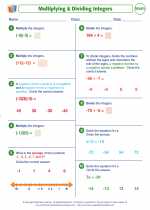Percentages
Percentages are a way of expressing a number as a fraction of 100. The term "percent" means "per hundred," so when we say "10 percent," we mean "10 out of 100." Percentages are used in many real-life situations, such as calculating discounts, expressing proportions, and understanding interest rates.
Converting between Percentages and Decimals
To convert a percentage to a decimal, divide the percentage by 100. To convert a decimal to a percentage, multiply the decimal by 100.
For example:
- 25% as a decimal is 0.25 (25 ÷ 100)
- 0.6 as a percentage is 60% (0.6 × 100)
Calculating Percentages
To calculate a percentage of a number, multiply the number by the percentage as a decimal. To find the percentage increase or decrease between two numbers, use the formula:
Percentage Change = ((New Value - Old Value) / Old Value) × 100
Percentages and Proportions
Percentages can also be used to express proportions. For example, if 40% of a group of students are girls, it means 40 out of every 100 students are girls. To calculate the actual number of students, you can use proportions and cross-multiplication.
Practice Problems
- Convert 0.75 to a percentage.
- If a shirt originally costs $40 and is on sale for 20% off, what is the sale price?
- A population of 5000 people increases to 6000 people. What is the percentage increase?
- If 30% of a number is 45, what is the number?
Answers
- 0.75 as a percentage is 75% (0.75 × 100 = 75%)
- The sale price of the shirt is $32 ($40 - (20% of $40))
- The percentage increase is 20% ((6000 - 5000) / 5000 × 100 = 20%)
- The number is 150 (45 ÷ 0.3 = 150)
By understanding percentages and practicing these types of problems, you can become more comfortable with this important concept in mathematics.
[Percentages] Related Worksheets and Study Guides:
.◂Math Worksheets and Study Guides Eighth Grade. Integer operations
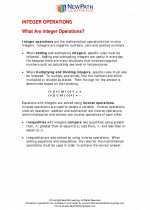
 Worksheet/Answer key
Worksheet/Answer key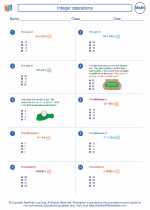
 Worksheet/Answer key
Worksheet/Answer key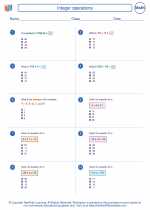
 Worksheet/Answer key
Worksheet/Answer key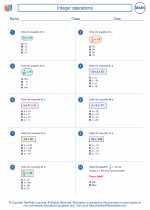
 Worksheet/Answer key
Worksheet/Answer key